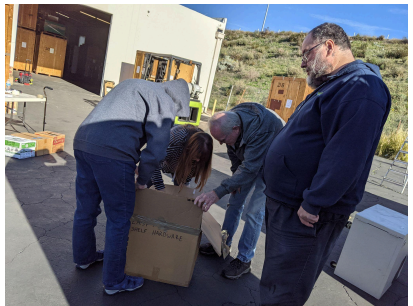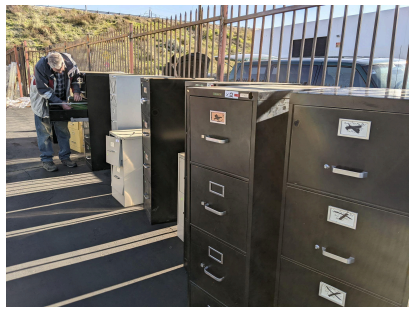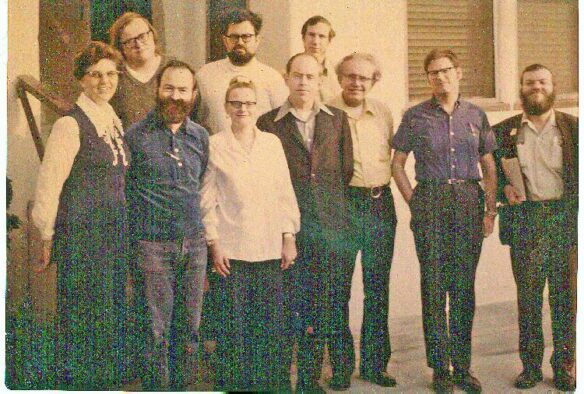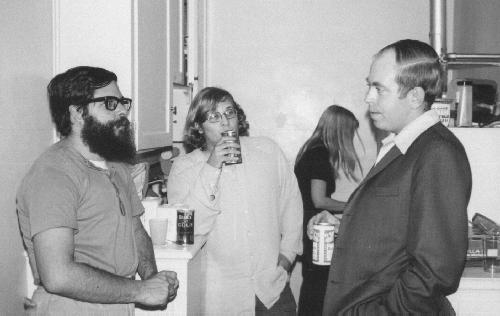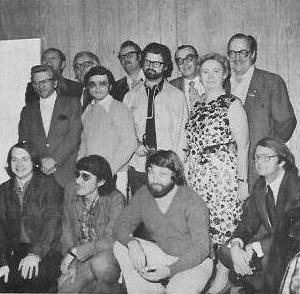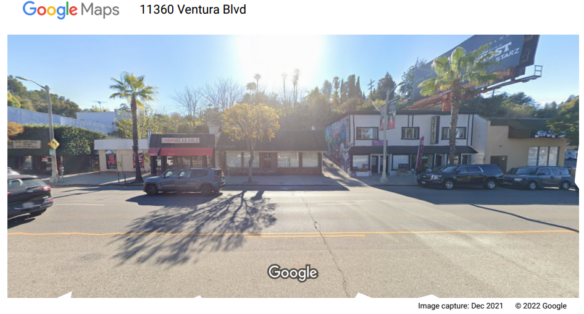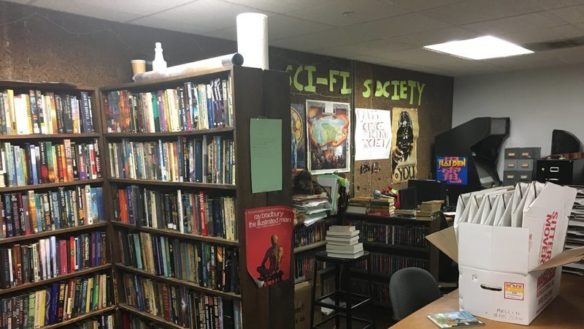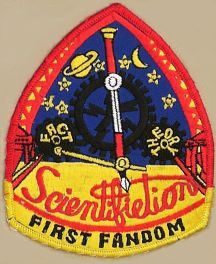
By Žarko Milićević: On Monday March 11, 2024, at Belgrade Youth Center, Serbia, the “Lazar Komarčić” Science Fiction and Fantasy Society held a lecture on the beginnings of genre publishing in Serbia/Yugoslavia. The lecturers were Miodrag Milovanović, author of Srpska naučna fantastika (Serbian science fiction, 2016) and Žarko Milićević (LK society’s president, on bluesky facebook or nerazuman(at)gmail.com).
Since this is the first time we’re reporting: “Lazar Komarčić” Science Fiction and Fantasy Society is from Belgrade, Serbia, established 1981. Meetings are held every Monday at 19:00. Our host is the Belgrade Youth Center. Each monthly meeting is a panel / discussion / presentation (new books/comics) / book club. Our fanzine Emitor, which won best fanzine at 2014 Eurocon, published its 500th issue in September 2023. You can find some scans here. In #500 there is an almost complete list of all panels 1981-2023, and we’re trying to list the conventions and con programmes next.
Website www.emitor.rs fell into disuse but has plenty of non-current material. Online we hang out on Facebook mostly, also Instagram. Write at lazarkomarcic (at) gmail.com
These are the key parts of the lecture:
55 YEARS OF KOSMOPLOV – Beginnings of genre publishing
The 60s were a time of print magazines: there were school magazines, youth magazines, technology, home economics, astronautics, DIY, etc… magazines, and in almost every one (and also in daily and weekly newspapers) stories or novels in sequels were published, often of the science fiction genre which was on the rise during the Space Race. However none was dedicated specifically to science fiction. Same thing applies to books and book series.
Newspaper publishing company “Duga”, Belgrade, started a popular pulp magazine 300 ČUDA (300 wonders) in 1954. with sub-pages ZELENI DODATAK and PLAVI DODATAK that occasionally contained science fiction novels and SF stories. (300 ČUDA ended in 1974.)
“Dnevnik” from Novi Sad, Serbia, launched the pulp novel series X100 in 1962. with crime / western / sf novels, with over 1000 issues. Much later, in the 80s they launched the SF-only series X-100 SF.
In 1967, the publishing house “Yugoslavia”, Belgrade, launched the KENTAUR science fiction series under the editorship of Ivan V. Lalić and Vitomir Korać. Impressive edition, 8 books, hardcover, black and white covers, sadly put to end immediately.
KOSMOPLOV (interslavic for Spaceship) was launched in 1968 by “Duga”, as a specialized magazine for Cosmonautics and Science Fiction, edited by Gavrilo Gaja Vučković. It was the first specialized publication that had SF as an key and integral part of its editorial intention, as well as its name. KOSMOPLOV had color covers, 72 pages, 24 issues, starting as a monthly and then sped up to biweekly. Content was mainly western SF, in contrast to mostly Soviet stories that were available in the 40s and 50s. Vučković also started asking for Yugoslav authors, and published them under real names (most authors were published under foreign sounding pen names because rates were larger for “translation”, which gives researchers huge problems when establishing authorship).
KOSMOPLOV was shut down in June 1970, when the publisher fell into financial problems. It sold well enough on its own, so Vučković practically immediately after the demise of KOSMOPLOV successfully pitched a new magazine named GALAKSIJA (Galaxy) with similar concept, broadening the subject first to aeronautics and then to popular science and computer programming.
The first issue of GALAKSIJA was published in March 1972. Vučković continued publishing SF stories. The company “Duga” that owned GALAKSIJA was dissolved in 1974 for dissident and anti-communist content in their flagship magazine DUGA, and annexed to another publisher “BIGZ” (Beogradski izdavački grafički zavod). Some of the magazines were dropped, but GALAKSIJA continued to grow, while gradually reducing the space dedicated to SF. Vučković published ANDROMEDA in 1976, a first SF collection as kind of a best-of stories from GALAKSIJA, and also enlisted Zoran Živković as translator and editor. It was a huge success and sold out its 10,000 copies, and had three yearly issues.
Croatian publishing company “Vjesnik” launched SIRIUS, also in 1976, which became the best known SF magazine in Yugoslavia, attaining the largest circulation in Europe for a genre magazine, and winning two ESFS prizes.
The success of ANDROMEDA urged the revival of “Yugoslavia’s” SF series KENTAUR, a series that set a tremendously high bar, and won its editor Ivan V. Lalić an ESFS award also, at Eurocon in Poznan, Poland, 1976.
This lecture stops at the end of the 70s. The golden age of Yugoslav SF are the 70s and the 80s (marked by Živković’ publishing company “Polaris”). With the country’s demise in the 90s, the economic crash and the civil war, all these publications were slowly put to an end.
The 90s are a separate story now with separate countries, and separate attempts to revive the genre magazines, and that’s a topic for another lecture, as well as the history of fan organizations that started forming during the late 70s. Next time 🙂
Download the covers of the first 24 issues of Kosmoplov from Google Drive.

